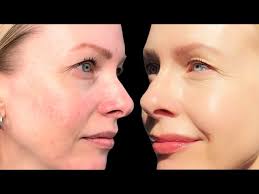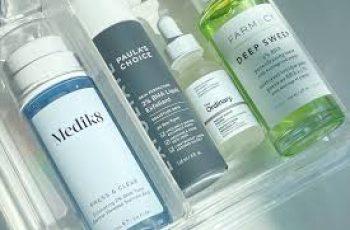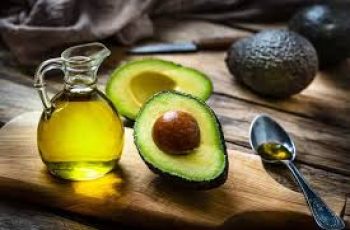
What Does Azelaic Acid Do for Rosacea?
We’ve focused a lot on azelaic acid recently, as mentioned in previous posts you will know it is a high performing skin ingredient that offers an impressive amount of benefits.
One of the most interesting is the fact it is able to combat acne and redness in the skin, such as rosacea.
The reason these two benefits are so unusual to find in an ingredient is due to the fact that (quite often) anything formulated to target breakouts,
such as spots and blackheads can often become drying on the skin and if used incorrectly results in irritation and redness.
Azelaic acid demonstrates again how it is a one of a kind ingredient by perfecting the balancing act of treating flare-ups in breakouts and redness so effectively.
This brings me round nicely to today’s topic and answering a question we have found reappearing often which is- “What does azelaic acid do for rosacea?”
I’ve done some digging around and will share with you what results you can
expect to see when using azelaic acid in your skincare routine and how it can combat any redness or rosacea.
Does azelaic acid reduce redness?
Yes, there are a lot of clinically proven studies surrounding azelaic acid and the benefits it can provide for the skin, particularly reducing any inflammation and post breakout redness and hyperpigmentation.
It has the ability to do this by preventing the overproduction of melanin to cause the pigmentation to darken on any areas or patches of discolouration.
This then leads to another ability of azelaic acid to improve the appearance of swelling caused by visible blood vessels that result in a flare-up of rosacea and other forms of redness.
Although azelaic acid provides exfoliation that often irritates rosacea and skin inflammation it delivers this in a gentle and effective way without stripping the skin of the vital oil
it needs remain healthy and doesn’t penetrate too far down the lower layers of the skin making it feel severely dry, tight and uncomfortable.
Just as a side note- you must ensure you speak to your doctor about introducing azelaic acid into your skincare routine, particularly if you have a hyper-sensitive and dry skin type.
How long does azelaic acid take to work on rosacea?
Let’s start at the beginning and the best way of starting your azelaic acid skin journey:
First you want to double check with a dermatologist that the concentrate and formulation is safe to use by you at home.
Next you should perform a patch test by applying some of the product to your forearm and leaving it for 24 hours to ensure there will be no reactions to the skin.
If at any point you find the product begins to make your skin burn, sting or itch, wash it off immediately and avoid using it in the future.
To get the best idea of how azelaic acid works for the skin and signs of rosacea you should use it for consistently for 3 months.
The time in which you see results varies between each person, some see a difference with an improvement in areas of pigmentation after 1 week.
For redness and areas of rosacea you may see the benefits within four to six weeks, or even sooner for some depending on the severity of the rosacea.
There you have a guide of how to introduce azelaic acid to your skin and how long it takes for it to work on rosacea and redness.
You can also help the process by ensuring you follow these top tips on keeping your skin healthy and happy when using new acids on the skin.
Always ensure you are applying a daily SPF to protect the skin from sun damage.
Help azelaic acid penetrate the skin by removing the barrier of dead skin cells that gather on the surface of the skin with AHAs, such as lactic acid.
Avoid using BHAs, such as salicylic acid and other potent ingredients to prevent the skin becoming too dry and irritated.
Team your azelaic acid products with others that are enriched with ingredients that contain humectant traits such as hyaluronic acid to help draw moisture into the skin and lock it in place.
Remember that slow and steady wins the race, plan out and develop your routine to include products that will combat signs of rosacea whilst nourishing and protecting the skin barrier.
Which acid is best for rosacea?
There are many acids available that provide many skin benefits but which one exactly is the best for applying to help with rosacea? Well, it’s Azelaic acid! No really, it is the best one and here’s why:
Azelaic Acid
Not only does it kill the bacteria known for creating spots and blemishes, also contains anti-inflammatory properties helping to reduce symptoms of rosacea flare-ups of the skin.
It is able to do this whilst still remaining gentle on the skin.
Ascorbic Acid
Also known as vitamin C, this acid does also provide rejuvenating benefits for combating rosacea but can be quite irritating to the skin.
What you must also remember is that azelaic acid and ascorbic acid are best avoided to be used together as they have a tendency to counteract each other.
You can find out more about this in our previous blogpost about using vitamin C and azelaic acid together in your skincare routine.
Hyaluronic Acid
This ingredient will help in many ways due to the fact it is able to lock in moisture into the skin helping to repair the protective barrier.
It is also safe for all skin types to use and you may find when teamed with azelaic acid will provide impressive skin results.
There you have some examples of which acids are best to use when wanting to combat signs of rosacea and other areas of redness.
Don’t forget if you ever have any concerns or questions about any of these ingredient and how you can add them to your skin, it is best to consult your GP or a dermatologist.
Can I use azelaic acid twice a day?
Yes, it is perfectly safe to use azelaic acid twice a day preferably once in the morning and again later in the evening.
If you are wanting to target your rosacea effectively and reduce any inflammations we would suggest using it consistently to see quicker results and achieving your skin goals.
Once your skin has built a tolerance and become used to how the rest of the products in your routine work you will be able to have the confidence
that your skincare routine is delivering the best benefits giving you an all-over improvement of the health and appearance of your complexion.
So, now I hope you have a better understanding of azelaic acid and how using it in your skincare routine will improve the appearance of rosacea.
If you have any questions or fancy joining the skin chat come and follow us on
Instagram, look forward to seeing you there!
DQH Knowledge drop: In your 20s, your skin cell turnover decreases. (Cell turnover is a key component in keeping your skin youthful.) You know what else slows down? Your collagen production. Starting in your 20s, collagen decreases by about 1 percent per year. Should you want to prevent fine lines and wrinkles, start by eliminating behaviors that contribute to premature aging. “If it’s bad for you, it’s bad for your skin,” says dermatologist Michel Somenek.
“Cigarette smoking reduces blood flow to the skin and causes premature wrinkling and a dull skin texture. Making the repeated pursed motion to inhale can also cause smoker’s lines. Alcohol and recreational drugs are toxins for the skin that damage its cellular structure and DNA,” Somenek tells us. “The faster you eliminate vices while you are young, the better chance your skin and body have to recuperate.” Also, adopting an anti-aging routine in your 20s is key. After all, the best offense is a good defense. We spoke to Somenek and experts Joshua Ross and Audrey Kunin to find out more.
Keep reading for the best anti-aging products for your 20s, according to skincare professionals.
Sunscreen
“We all know that the sun is the number one cause of skin aging and starting the prevention in your 20s is very important,” Ross says. “The majority of your sun damage won’t start to appear until you’re in your 30s, so don’t wait until you see it surface or you’ll be behind the curve. Stay ahead of it with a good-quality zinc-based sunscreen worn daily.”
Farmacy Green Defense Daily Mineral Sunscreen
An invisible sunscreen with SPF 30, plus botanical extracts meant to protect skin with tons of antioxidants. Bonus: It’s clean and fine to use under makeup.
Bareminerals Complexion Rescue™ Tinted Moisturizer Broad Spectrum SPF 30
Although we recommend you use your SPF and moisturizer separately, we also understand moments when you don’t have time or energy for that extra step. For those times, this bareMinerals moisturizer is a great thing to have on hand.
Vitamin C Serum
“A great introduction to anti-aging is to start with a vitamin C serum in your morning skincare routine,” Ross says. “It’s a powerful antioxidant that will neutralize free radicals and brighten the skin.” He adds that it’s a great way to counteract the effects of the sun’s harmful rays, which, as previously mentioned, are among the biggest causes of premature aging.
Drunk Elephant C-Firma™ Vitamin C Day Serum
The Drunk Elephant C-Firma is a lightweight serum that promises to give skin a glow by combining the brightening powers of vitamin C with ferulic acid, l-ascorbic acid, and vitamin E. The included sodium hyaluronate is meant to replace hydration loss, so you shouldn’t have to deal with any irritation.
Sunday Riley C.E.O. Rapid Flash Brightening Serum
This potent serum is jam-packed with vitamin C (15 percent, to be exact), which means it’s a potential superstar at both brightening skin and dousing it in antioxidants.
Peptides
Using peptides on your skin has many benefits, says Somenek. “The skin barrier is what defends the body against pollution, UV rays, bacteria, and toxins. It can be damaged by several everyday factors. Using topical peptides aids in building a stronger barrier,” he says. “Peptides comprise elastic fibers, which are a type of protein. These fibers help to make skin appear taut and firm. Peptides can also help repair damaged skin, relieve inflammation, and even out skin tone. Some peptides can kill acne-causing bacteria that is common in 20-somethings.”
Kunin agrees, saying, “Peptides are an excellent entry point for supporting collagen.” She recommends looking for face and eye treatments that contain these collagen-boosting powerhouses.
Charlotte Tilbury Magic Eye Rescue Cream
This Charlotte Tilbury super-emollient eye cream has a base of coconut oil and shea butter (read: it’s incredibly hydrating). Botanicals plus peptides are meant to help reduce dark circles and boost collagen, respectively.
This creamy moisturizer serves up potent collagen-boosting peptides and pycnogenol, and antioxidant-rich vitamin C. “Instead of sitting on top of the skin, peptides penetrate the outer layer so they go deep. The ‘signals’ they send tell the cells to produce elastin and collagen, which are needed for youthful-looking skin,” explains Somenek.
At-Home Peel Pads
Remember that skin cell turnover fiasco we talked about earlier? One way to help support it is by exfoliating. “Exfoliation is important to help keep skin fresh and luminous,” Kunin says. She recommends using at-home peel pads as an easy and effective way to exfoliate.
“The goal in your 20s is to fight the slowing pace of cell turnover. It is wise to use products that gently exfoliate, yet still remove oil and other impurities. Products that have Alpha Hydroxy Acids (AHA) or Beta Hydroxy Acids (BHA) are a good choice.”
According to Somenek, you should only exfoliate two to three times a week. “People of all ages are guilty of over-exfoliating and that can be too much of a good thing,” he says.
Dermadoctor Kakadu C Intensive Vitamin C Peel Pad
A few swipes of this Derma Doctor powerful peel pad promise to leave your skin glowing and smooth, thanks to the seven (yes, seven) types of chemical exfoliants, including AHA and BHA. It also contains vitamin C via Kakadu plum extract for added brightening and antioxidant protection.
KEY INGREDIENTS Kakadu plum extract is sourced from the Kakadu plum, a fruit grown in northern Australia. It contains vitamin C, which restores the skin’s natural barrier, increases collagen production, and soothes irritation.
Dr. Dennis Gross Skincare Alpha Beta® Universal Daily Peel Pads
These are the gold standard of peel pads, with a cult following and over 900 five-star reviews on Sephora. They’re easy to use and contain a blend of anti-aging exfoliating acids.
Emollient Night Cream
“In your 20s, you need to start upping the hydration in your skincare routine. You may have been cautious of over-moisturizing because of acne in your teens, but as you enter your 20s, your skin transitions and becomes drier,” Ross says. “I recommend an emollient night cream added into your evening skincare regimen.”
“Twenty-somethings need to make sure that they are not using creams that will clog their pores and cause excess oil production,” says Somenek. Opt for non-comedogenic products.
Cerave Skin Renewing Night Cream
One great choice is the CeraVe Skin Renewing Night Cream, which is a non-comedogenic night cream that leaves skin soft and glowy. It combines the moisturizing powers of ceramides and hyaluronic acid.
RoC Retinol Correxion Max Hydration Creme
“The best night cream ingredients contain retinol, benzoyl peroxide, and/or salicylic acid or hyaluronic acid. The goal is to moisturize, yet remove excess oil,” says Somenek. This Roc Retinol Correxion cream fits the bill as it contains both hyaluronic acid and retinol so it promises to moisturize while also being non-comedogenic.



